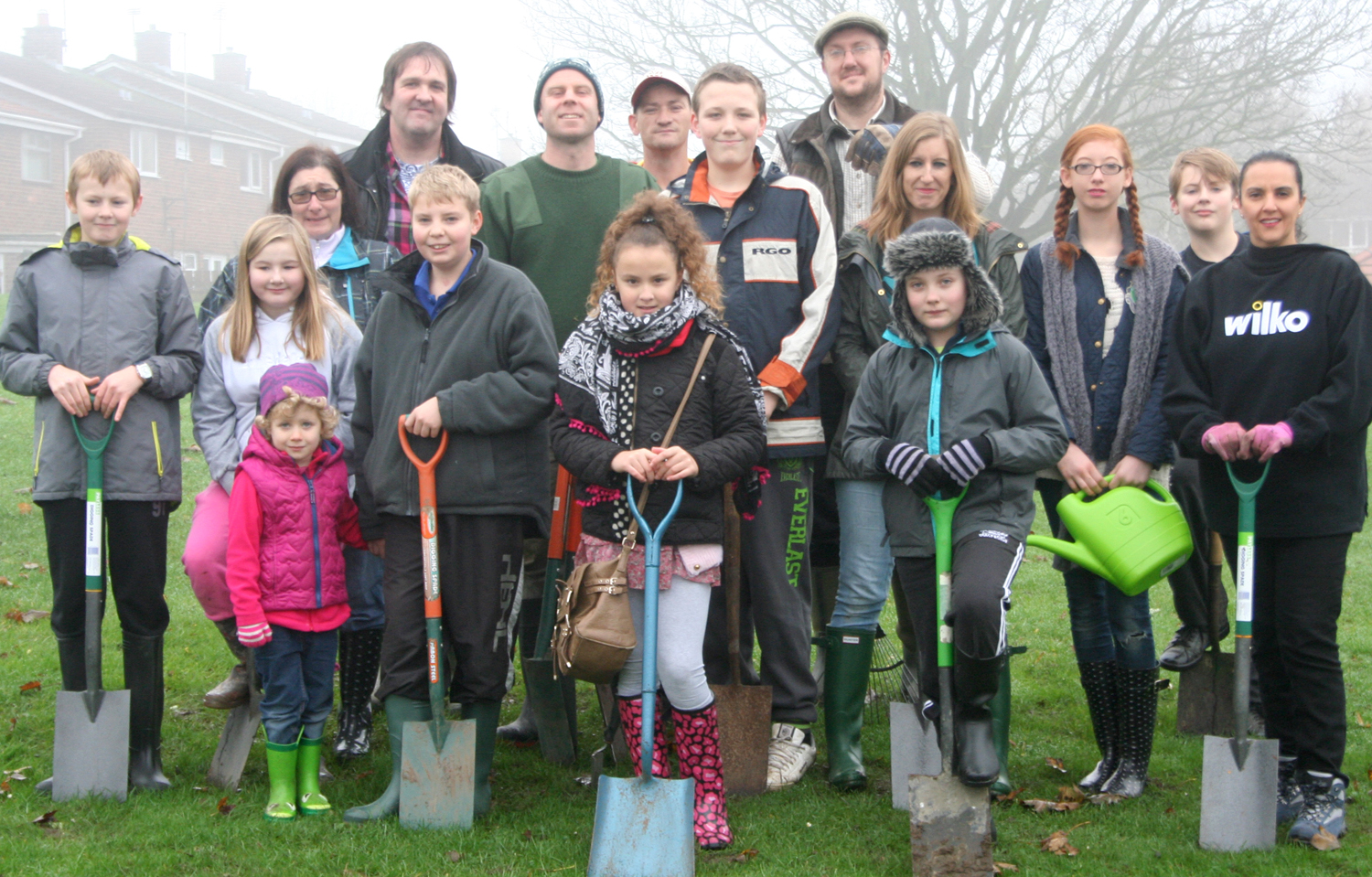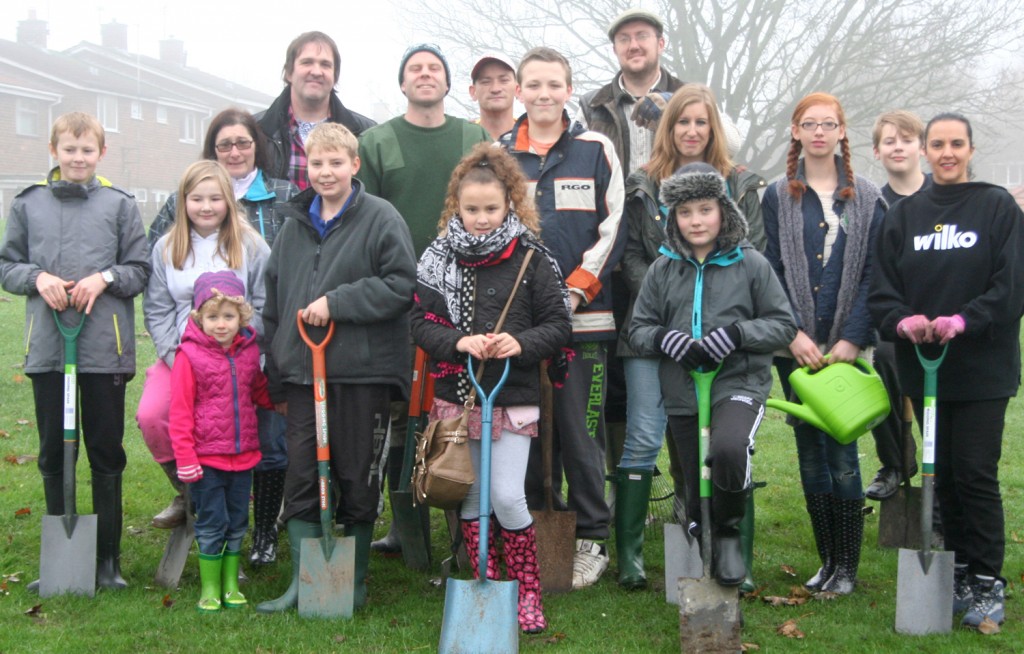They called it the Big Dig – and so it was: about twenty people answered an appeal by Woodham Wildlife Club to help plant 450 trees around the perimeter of the school. Amongst those braving the freezing fog and muddy puddles were pupils, parents, staff members and volunteers from Wilkinson’s Helping Hands committee.
Many arrived carrying their own spades, and wellies were definitely the fashion accessory of the day. Despite the weather participants were excited by the prospect of being part of something which could potentially last a lifetime, and longer – considerably longer – in some cases.
The trees were donated by the Woodland Trust as part of their annual nationwide tree planting campaign. The club stored them in a shed in the school’s outdoor classroom (a specially landscaped courtyard where students can relax as they learn), and had been anxiously keeping an eye on the weather since their delivery.
The trees came packed 150 to a box and looking at these fragile specimens it was hard not to admire both the trees and the Wildlife Club members for their optimism.
The recipe for happy trees is fairly straight forward: take one tree, one plastic cover (for protection from rabbits) and one cane (for support); combine ingredients and set-aside until well risen which, in the case of an oak tree might be several hundred years.
When ready you should have something that not only provides food and shelter for a wide variety of insects, birds and mammals, but which, ultimately, provides the oxygen we all depend upon for our survival.
The trees are all native and include, holly, beech, wild rose, crab apple and hazel. They have been chosen for the task because (unlike many of the imported conifers which cloak our hillsides) they provide the best range of support for Britain’s indigenous animals.The holly, provide all year round protection for songbirds from crows and magpies which stalk the school; others, such as hazel, blackthorn and crab apple provide much needed food for pollinating insects and birds. It is also hoped that increasing the tree cover on the site will create a wildlife corridor for mice and voles etc., as well as providing over-wintering opportunities for hedgehogs, frogs and toads.
It took three hours to get all the trees in, and by the time the task had been completed the volunteers were looking tired, but satisfied. The Big Dig may have been over, but the pupils still had more tasks ahead of them as they continue with their ambitious plans to give their school a wildlife makeover.
Over the winter they will be busy installing bird boxes and feeding stations, as well as hedgehog homes and a number of other such hibernacula. Before you know it, the first shoots of spring will be visible and Woodham Wildlife Clubbers and their community supporters will be out in force once again, laying the first of their wildflower patches.
The Big Woodham Dig










